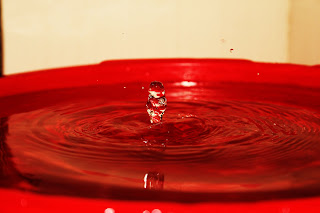
 Photo by Jason
Photo by Jason
13/5/2010-15/5/2010
古晋Stephen Tong 唐崇荣博士布道会(信仰的能力)
Stephen Tong (
Chinese: 唐崇荣;
pinyin: Tang Chongrong or Lau Tong; born 1940) is an
Indonesian Reformed evangelist, Theologian, and
Christian philosopher. In his ministry spanning 50 years, he has preached to more than twenty million people since 1957.
[1] As an evangelist, Tong has preached in Asia, Europe, Australia, North and South America, and guest lectured at many theological seminaries in Asia. He is the founder and the President of the Stephen Tong Evangelistic Ministries International (STEMI) which has established offices in the US, Europe, Hong Kong, Jakarta, Kuala Lumpur, Singapore, and Taipei. Stephen Tong was born in 1940 in
Xiamen, China, to a Chinese father and an Indonesian mother of Chinese descent. His family migrated to Indonesia when he was 9 years old. The family had seven sons (Tony, John, Peter, Caleb, Solomon, Stephen, Joseph), five of which would became Christian ministers later on,
[2] and one daughter (Mary). He was also known as a bright, attentive, passionate, and rush man
[3]. At the age of 17, he dedicated his life to Christ after hearing a sermon by
Andrew Gih at a youth conference near
Surabaya.
[4] His mother, who was a widow since he was 3, was instrumental in his spiritual life. He said of his mother, "When I was small, the first words I'd hear in the morning were those of my mother while she prayed. She prayed for each of us children by name, and asked God to guide us."
[5]Stephen Tong obtained his Bachelor Degree in Theology (B.Th) from
Southeast Asia Bible Seminary in
Malang, Indonesia, where he later served on the faculty, teaching theology and philosophy for 25 years. In 1985, Stephen Tong was awarded an
honorary doctorate in leadership in Christian evangelism from the
La Madrid International Academy of Leadership in
Manila, in the Philippines. Since then he has been usually formally referred to as "Rev. Dr. Stephen Tong". In May 2008, he received an honorary Doctor of Divinity degree from the
Westminster Theological Seminary.
[6][7]Stephen Tong names his brand of theology as Evangelical Reformed, which is said to be aimed at meeting the challenge of the
Charismatic movement as well
Liberalism.
[8] It emphasizes on the importance of the Bible as the sole word of God and actively encourages evangelism. Tong also frequently mentions the need for churches to attend to the
Cultural Mandate. Besides this he is also a fervent
creationist, having promoted his creationist ideas in rallies held in Taiwan and Singapore.
Among his listeners, Stephen Tong is known to possess a unique flair of rhetoric in his preaching, often linked to influences of
George Whitefield and
Charles Spurgeon. Many of his sermons have been published into books.
Tong's ministry is mainly conducted among Mandarin and Indonesian-speaking audiences. Since 2000, Tong has preached
expository sermons on the
Gospel of John,
Romans,
Hebrews,
James and other topics in
Jakarta,
Singapore,
Kuala Lumpur,
Hong Kong, and
Taipei every week. Every year, Christmas and Easter mark the occasions for evangelistic rallies in these cities, in addition to other rallies in these cities and others which he visits less frequently. As an evangelist, he is said to have influenced hundreds of thousands to become full-time ministers of the
Gospel.
[9]Stephen Tong founded the Reformed Evangelical Church of Indonesia. The church subscribes to the
Reformed confessions generally accepted by Reformed churches, but it has its own unique confession of faith.
[10][11]The church has expanded to include branches in various parts of the world including Germany, North America, Asia and Australia. A new building for the Reformed Evangelical Church in Jakarta, the Messiah Cathedral (which includes a 4600-capacity auditorium
[12]) was finished in 2008. It took 16 years to persuade the Indonesian government to issue a permit to build the church.
[13] The church building was personally designed by Tong himself. It is one of the largest Chinese Christian
evangelical church facilities in the world, with 600,000 square feet (56,000 m2) of space.
The Reformed Evangelical Church of Indonesia and its affiliated institutions have female evangelists, lecturers, and church council members. They are allowed to preach and assume authoritative roles, although they are not ordained.
[14]Tong has composed numerous Mandarin
hymns and chorus, popular among many Christians
[15]. Other than preaching and teaching, his activities revolve around conducting choirs and orchestras, and educating the church in the appreciation of sacred music. His other interests include arts and architectural design, having contributed to the design of many church buildings in Indonesia. He is also known to have interest in
classical music especially in Baroque era,
watches, and
antiques.
[16]















